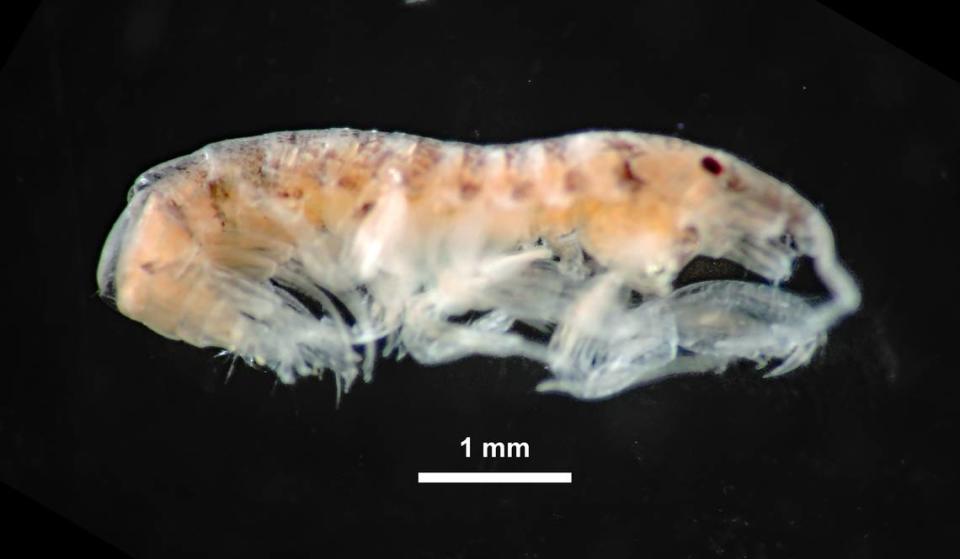Volcanic ocean creature — with ‘long’ legs — discovered in Japan. It’s a new species
Surrounding the remote island of Miyake, off the east-central coast of Japan, the stoney sea floor matches the volcanic rock on the surface.
Scattered across the rocks are patches of green algae, bright against the black stone.
Crawling along these rocks are small crustaceans — and one is a completely new species.
A group of researchers hit the water in scuba gear and snorkels on the hunt for mysterious creatures on the remote islands surrounding Japan, according to an April 9 study published in the journal Zootaxa.
They swam around the coast of Miyake Island and saw small, translucent shrimp on some of the rocks, according to the study. Using a hand net, they scooped up the animals and brought them back to the Osaka Museum of Natural History for a closer look.
The shrimp were identified as part of the Tethylembos genus due to the shape of the mandibles, or jaws, according to the study, but a few things stood out to make them unique.

Discover more new species
Thousands of new species are found each year. Here are three of our most eye-catching stories from the past week.
→Deep-sea creature — with yellowy tentacles and over 80 feet — is new species
→Reddish sea creature — with over 70 feet — found by a submarine
→Spiky 'dwarf'-like creature found at abandoned building in India
The tiny creature, just 5.4 millimeters long, has long, bristle-like hairs along its body, according to the study.
It also has “long” legs compared to other known shrimp in the same genus, the researchers said.
Its head is a “light brown with brown patches,” according to the study, and there are some brown patches down the length of its body.
Most notably, the new species is identifiable by the “excavated” nature of its front appendages, the researchers said.
It was given the Japanese name “Hekomi-maeashi-yokoebi,” roughly translated to “Hollow-front, leg-side shrimp,” according to the study.
The scientific name, Tethylembos cavatus, comes from the Latin word cavatus, meaning “hollow,” referring to the shape of the shrimp’s pereopod, one of the main limbs used for moving around, according to the study.
The hollow-front shrimp was one of two new species described in the study, and specimens of a known species were also collected.
More than 30 species of shrimp in the Aoridae family have now been described in Japan, according to the study.
Nocturnal creature — a ‘rapidly-running’ predator — discovered as new species in India
Leaping creature — with orange thighs — found in Vietnam forest. It’s a new species
‘Bloodthirsty’ predator found buried with ancient dogs in Hungary, baffling experts
‘Emerald’ creature – with eyes like ‘fire’ — discovered in Thailand. See new species

